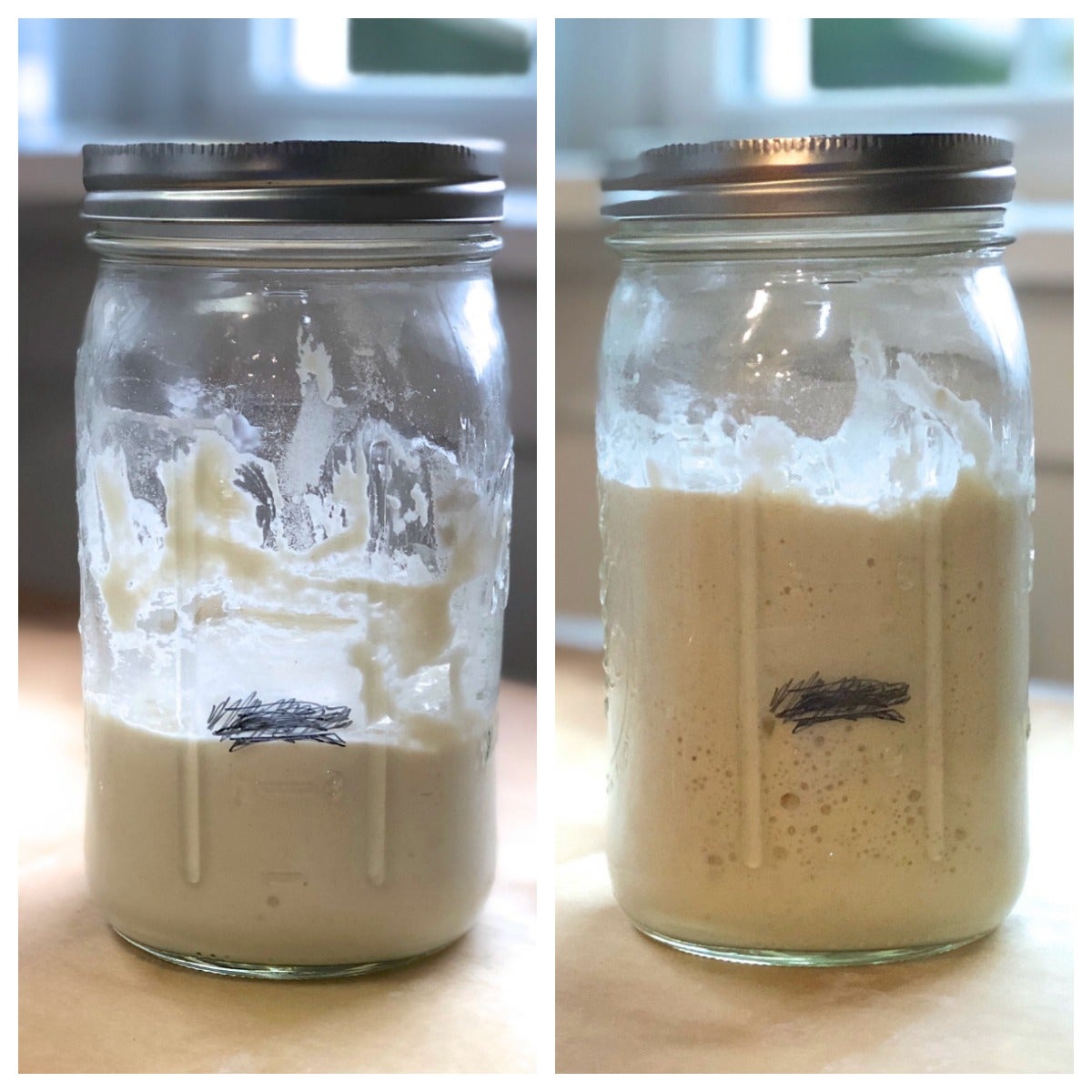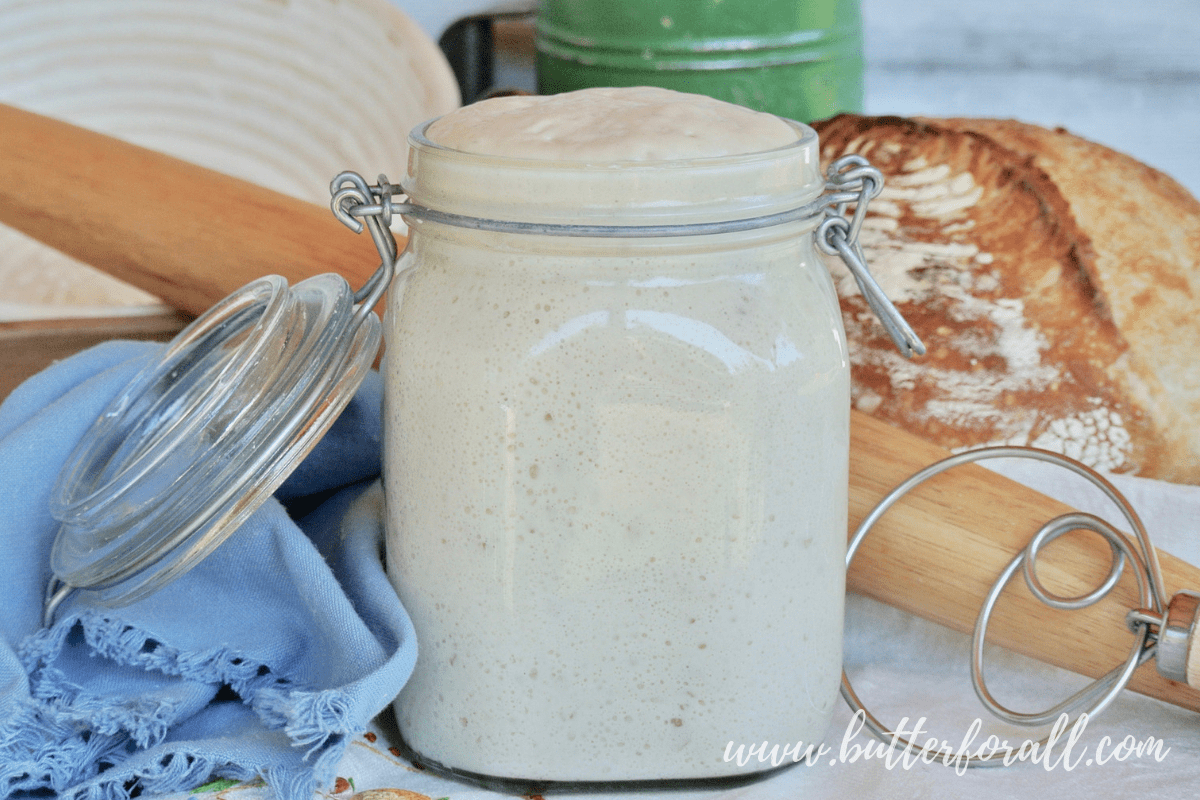
The day before you plan to use a sourdough starter to bake bread it needs to be fed flour and water to increase it to at least triple its size. To test this place a piece of tape to mark your starters volume and then check back four hours after feeding it.

Instructions To store your starter at room temperature.
Feeding sourdough starter before baking. The day before you plan to use a sourdough starter to bake bread it needs to be fed flour and water to increase it to at least triple its size. I prefer a less-acidic bread so I increase mine to. Instructions To store your starter at room temperature.
Stir the starter thoroughly. Spoon 12 cup 113g starter into a bowl. Repeat this process every 12 hours feeding the starter twice a day.
Remove starter to bake with as soon as its. To store your starter. Build up Enough Sourdough Starter for Baking Measure the amount of fresh starter you have in the container.
Feed starter with flour and water. If using a scale to measure ingredients combine equal amounts by weight of starter. Cover the container and let starter sit for 8-12.
Instructions Weigh 4 oz of your unfed starter into a clean container. Discard the extra starter see note Add the flour and water and mix until combined. Set aside at room temperature.
The starter is ready to use when it has doubled in volume and. The very short answer is your sourdough starter generally will be at its peak anything between 4 and 12 hours after feeding. The optimum time to use it will be when there are lots of bubbles at its surface and it has has physically risen to its peak level just before deflating back down again.
How to feed maintain a small starter. Start with 3 oz of active starter. Store the starter in a small container pint size in the refrigerator between baking sessions.
36-48 hours before you want to make your dough take the starter out of the refrigerator. A sourdough starter is how we cultivate the wild yeast in a form that we can use for baking. Since wild yeast are present in all flour the easiest way to make a starter is simply by combining flour and water and letting it sit for several days.
Making a starter is a simple process of combining flour and water which is then subsequently fed or refreshed with more flour and water over a. If youre not baking every week and dont want to feed your starter every day you can keep it in the fridge. It is best to feed your sourdough every week.
Even if you feed it and then return it back to the fridge without using it. This keeps it in good health long term. To create baking-ready starter feed it until it doubles in size within 6 to 8 hours of being fed.
And appears bubbly and vigorous with a sharp clean aroma. Measure out the amount called for in your recipe retaining 113g for the future and discarding any additional. Feed that 113g of retained starter before refrigerating.
Rather than worrying about whether you stir down the starter before measuring by volume you should really be measuring by weight. Kitchen scales are cheap and incredibly helpful especially for any kind of baking. There are almost as many different feeding ratios as there are sourdough starters.
When steadied at room temperature and fed daily your sourdough starter will always be ready to use for baking. Make use of the starter to prepare bread dough within 3-4 hours of being fed at that point. The starter is at its climax of activity.
Feed Refrigerated Sourdough Starter Every Week. Instructions Place a bowl or jar on the scale and set the weight to grams. Make sure to zero out the scale after placing the bowl on it but before adding any ingredients.
Add 200 grams of organic. An active sourdough starter can quickly double its volume. If you note that the volume has doubled four hours after feeding it your starter should be ready for baking.
To test this place a piece of tape to mark your starters volume and then check back four hours after feeding it. When do you feed your sourdough starter before you use it. Ive read a couple different things about the optimal time after feeding that sourdough starter has the most rising potential - some had feeding consistently for a few days to build others just said the day before you want to start baking another place said starter had rising potential only within 3-5 days of feeding.
1 Feeding Sourdough Starter - What to do with your new sourdough starter. If playback doesnt begin shortly try restarting your device. Videos you watch may be added to the TVs watch history.
To feed your sourdough starter firstly use a clean utensil to remove all but 125 g of the sourdough starter from the jar. Then add 125 g plain flour and 125 g water and stir well until evenly combined. Seal the jar and store at room temperature or in the fridge.
Storing your sourdough starter. Tear off some of the starter place it in a small bowl and let it sit at room temperature for at least an hour before feeding. The amount of starter you feed depends on.
A sourdough starter is a live fermented culture of flour and water. Once its fed with additional flour and water it becomes bubbly and active. A small portion is used to make bread dough.